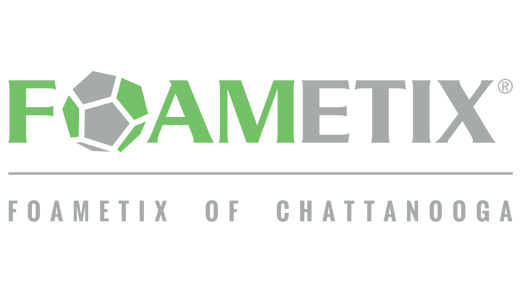Welcome to Foametix of Chattanooga
Optimize Your Home, Business, or Building's Comfort and Energy Efficiency with Foametix's Advanced Spray Foam Insulation Solutions.
As a Locally and Veteran-Owned and operated business for over 15 years, Foametix of Chattanooga prioritizes doing what's right, not easy. 100% Satisfaction Guarantee.

FOAMETIX® provides high-quality spray foam insulation solutions designed to enhance energy efficiency, improve indoor comfort, and reduce environmental impact. Our innovative open-cell and closed-cell foam products create an airtight seal, minimizing air leakage, moisture intrusion, and energy loss in residential, commercial, and industrial applications.
Engineered for superior durability and thermal performance, FOAMETIX® insulation helps lower energy costs, improve structural integrity, reduce pests in crawlspaces and contribute to healthier indoor air quality. Backed by expert installation and a commitment to sustainability, FOAMETIX® is the trusted choice for builders, homeowners, and businesses looking for long-lasting insulation solutions.
Energy Savings
Reduce utility costs for your home or business.
Enhanced Comfort
Eliminate excessively hot or cold rooms or spaces in your home or business.
Pest Control
Crawlspace encapsulation weatherproofs and gets rid of unwanted pests.
Property Value
Increase your home or business's property value for the future.
SPRAY FOAM SERVICES MENU
SPRAY FOAM INSULATION
Advanced insulation science that outperforms all other types of insulation.
ATTIC INSULATION
Experience energy savings.
CRAWLSPACE SOLUTIONS
Air infiltration, pest problems, cold floors - we solve it all.
INSULATION REMOVAL
Professional, safe removal of old insulation and contaminants.
FIRE RESISTANCE
Options To Meet Fire Safety Standards.
POLE BARNS
Lasting strength, comfort, and efficiency.
STORAGE TANKS
Protect Your Assets.
SPRAY FOAM FAQS
Discover the right insulation for your home.
WHY CHOOSE US
Chattanooga's PREMIER INSULATION
We start with a complimentary, at-home consultation with one of our licensed insulation experts. You will be quoted fair prices - with no hidden fees - and provided with a reasonable installation timeline from start to finish. Our estimates are sent directly to your email inbox, where you can see line-item pricing as well as terms and conditions.
We Keep Our Promises
Trust is the cornerstone of our long-term success. We have served thousands of happy clients and look forward to serving you!
YOU'RE IN GOOD HANDS
WE DO IT RIGHT
We show up on time, maintain a tidy job site and perform high-quality work.
WE DO IT SAFELY
Keeping you and your family safe is the most important thing we do.
WE GUARANTEE YOUR SATISFACTION
